A Complete Travel Guide to the Harz Mountains: 16 Best Things to Do in Germany’s Secret Adventure Wonderland
Everything you need to know including the best attractions, when to visit, where to stay and how to get aroundFairytale towns and mystical mountains
The Harz Mountains have captured the imaginations of poets, writers and artists alike for centuries, and we can easily understand why.
This tucked-away region of Northern Germany is home to more cobblestone streets and timber-framed houses than we had room for on our camera’s memory card, and even though there are more cultural and historic attractions here than can fit on most people’s itineraries, the real draw of the Harz is the mountains.
While they are quite a bit lower than their far-away southern neighbours of the Alps, they are much more accessible – especially for people in Northern Europe looking for shorter travel times. Or for those who are rather looking for mellow hikes in beautifully forested and hilly landscapes full of myths and tales.
If you’re looking for an adrenaline rush, you won’t be disappointed by the Harz Mountains, either. From gigantic swings to endless kilometres of hair-raising mountain bike routes; the region has got you covered.
We have visited the magical Harz Mountains twice and as you can probably tell, we were completely charmed. We think you will be, too.
In this travel guide to the Harz Mountain, we will share our best tips on what to see and do in the area, where to stay, when to visit and much more!
Table of contents
- Why visit the Harz Mountains?
- Our time in the Harz
- Where to stay in the Harz Mountains
- What to do in the Harz Mountains
- Where to eat in the Harz Mountains
- How to get around the Harz Mountains
- How to get to the Harz Mountains
- When to visit the Harz Mountains
- What to bring to the Harz Mountains
- Minimise your impact


Why visit the Harz Mountains?
As we alluded to in the introduction above, we think that the Harz Mountains are a very suitable holiday option for many types of travellers.
The mountains (and their accessible northern location) are the big draw here, offering everything from easy family- and dog-friendly hiking routes to 2,000+ kilometres of mountain biking trails for thrill-seekers. Less daring bikers will also find plenty of nicely marked trails.
On top of that, we shouldn’t forget that there are clean, swimmable lakes everywhere – perfect for cooling down in the summer months.
In winter, snow falls regularly in the Harz creating more than 500 kilometres of cross country trails including several floodlit tracks as well as 53 downhill slopes ranging from easy to hard in difficulty.
Cities or nature?
The towns of the Harz Mountains are truly unique with incredibly well-preserved city centres full of cute houses, romantic streets and pretty churches.
You can mix spending time in the charming towns with exploring the forested paths through the misty rolling hills and mountains or you can simply focus on one or the other.
Either way, the Harz Mountains offer an easy getaway that will surely have you longing for more.



Our time in the Harz
Our first visit
On our first visit to the Harz Mountains, we spent 4 full days in the middle of November.
While it was a bit chilly, we had a great time exploring both the towns and the surrounding nature – all without tourist crowds.
Goslar was the base of our adventures for most of our visit, but we also spent a night in lovely Quedlinburg to experience the eastern part of the Harz.
Our second visit
For our second time, we had the luck of visiting the Harz region in the middle of sunny June.
There were flowers everywhere and the landscapes were vibrantly green. It looked quite different than it had in the autumn but equally impressive.
This time, we finally got to visit Wernigerode, Brocken, Hamburger Wappen and many of the other highlights we had missed the first time around.
Scroll further down to see all of the best things to do in the Harz Mountains!



Map and geography
Depending on how you look at it, the Harz Mountains are either located in the middle of everything or the middle of nowhere (in the good sense!).
The Harz is situated directly in the middle of Germany with easy autobahn access from several big cities. Still, it’s far away enough to make its visitors feel completely at ease – and give that special far-away-from-urban-life atmosphere that city-dwellers often so desperately need.
Technically, the Harz Mountains are located in the three states of Lower Saxony, Saxony-Anhalt and Thuringia. The region stretches for approximately 100 kilometres from west to east and 32 kilometres from north to south.

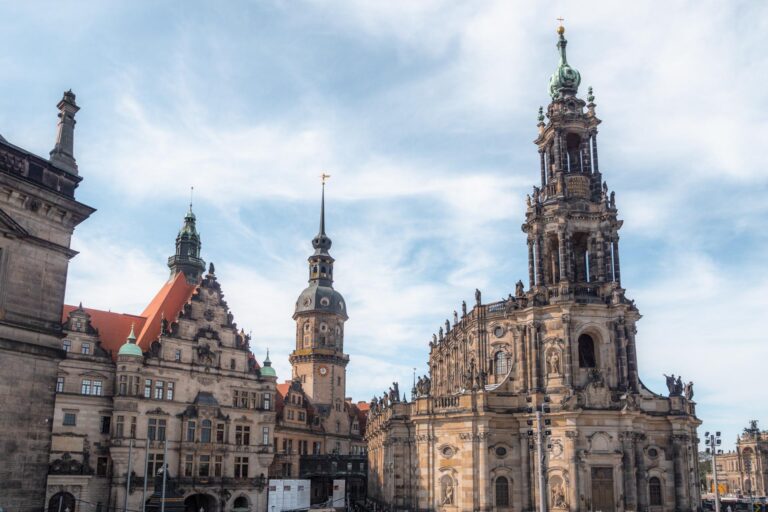
Where to stay in the Harz Mountains
The Harz Mountains area is compact enough that any choice of location will still leave you able to visit the rest of the region in a breeze – especially if you travel by car.
While staying in the mountains would surely be lovely if you intend to mostly hike, we think a city location will fit most travellers best. This way, you won’t be constrained by food options and you’ll still be very close to nature.
Goslar is your best bet with Quedlinburg a close second. Wernigerode is also worth your consideration.
Search for the best value accommodation in the Harz Mountains here (adlink).
You can also check out our full guide on where to stay in the Harz Mountains to learn more about the best towns to base yourself in and see more pictures of the hotels.
Below, we have included some of our favourite accommodation options in different price ranges.

Luxury
Goslar: Haus Mittenmank am Marktplatz
The 5-starred luxury apartments of Haus Mittenmank am Marktplatz are located directly in the middle of Goslar.
If you like to have more space and/or enjoy cooking some of your own meals, this is a fantastic place to stay.
Check prices and availability at Haus Mittenmank am Marktplatz (adlink).

Ilsenburg: Landhaus Zu den Rothen Forellen
With a great central location in the Harz Mountains in-between Goslar and Wernigerode at the foot of Brocken, 5-starred Landhaus Zu den Rothen Forellen is one of the region’s top choices for that ultimate relaxing place to stay.
With a swimming pool, spa area and sauna you’ll have plenty of ways to wind down after a day in the mountains.
Don’t forget to check out the nearby Ilsetal (Ilse Valley) for stunning nature and hiking.
Check prices and availability at Landhaus Zu den Rothen Forellen (adlink).

Value for money
Goslar: Romantik Hotel Alte Münze
4-starred Hotel Alte Münze has the perfect location in Goslar right next to the central Market Square.
The hotel almost feels like a small town; a mix of buildings old and new tucked away on a quiet side street. As we arrived here after the sun had set on our first day in the Harz, we felt transported back in time on the cobbled streets (almost like we were in an old film!)
As an added bonus, the restaurant at Hotel Alte Münze serves vegan meals. The service at the reception was also top-notch.
Check prices and availability at Romantik Hotel Alte Münze (adlink).

Goslar: AKZENT Hotel Villa Saxer
This is where we lived in Goslar during our second time in the Harz Mountains.
Ideally located in Goslar, this 4-starred hotel is a very comfortable place to stay complete with parking opportunities, breakfast buffet and all the amenities you’d need in the room.
We especially loved the view over the roofs of Goslar from our windows at the top floor.
Check prices and availability at AKZENT Hotel Villa Saxer (adlink).


Goslar: Hotel Der Achtermann
As you arrive in Goslar by train, you can’t miss the 4-starred Hotel Der Achtermann.
Being the largest hotel in town, it’s only fitting that they also have a huge spa area complete with an adventure swimming pool, a hot tub and several saunas – just what we needed after a long day out exploring the Harz!
Check prices and availability at Hotel Der Achtermann (adlink).


Quedlinburg: Romantik Hotel am Brühl
Quedlinburg is the most romantic town of the Harz with its perfectly preserved historic city centre.
For the most romantic stay, look no further than the 4-starred Hotel am Brühl.
We only stayed here for a single night but loved the atmosphere and design from the moment we set foot in the hotel.
Check prices and availability at Romantik Hotel am Brühl (adlink).

Quedlinburg: Bellevue Ferienwohnungen
For our second time in Quedlinburg, we stayed in Bellevue Ferienwohnungen.
The apartment has a fully equipped kitchen, a living room, a dining room and two big bedrooms.
It was honestly much bigger than we needed it to be, but we can imagine this being the perfect place to stay for a family!
Check prices and availability at Bellevue Ferienwohnungen (adlink).

Quedlinburg: Schlosshotel zum Markgrafen
A real-life (renovated) castle, 4-starred Schlosshotel zum Markgrafen is a unique place to stay in Quedlinburg.
It looks like there has been paid great attention to detail. And it’s actually cheaper than we expected.
Check prices and availability at Schlosshotel zum Markgrafen (adlink).


Wernigerode: Boutique-Hotel Anno 1910
We (unfortunately) haven’t stayed in Wernigerode ourselves, but if we did, it would be a dream to stay at the stylish Boutique-Hotel Anno 1910.
Check prices and availability at Boutique-Hotel Anno 1910 (adlink).

Budget
Hahnenklee: Dein Hotel
Located in Hahnenklee just 15-20 minutes from Goslar (and right next to the Liebesbank Trail!), Dein Hotel looks like a nice place to stay for a nature-filled trip to the Harz Mountains.
Check prices and availability at Dein Hotel (adlink).

Goslar: Hotel Harzlodge
Hotel Harzlodge is located a little more than a kilometre from the centre of Goslar’s old town and is a fine choice for a budget place to stay in the Harz.
Check prices and availability at Hotel Harzlodge (adlink).


What to do in the Harz Mountains
There are so many incredible attractions and things to do in the Harz Mountains that this travel guide couldn’t possibly fit them all.
These were our favourites.
Here are the 16 best things to do in the Harz Mountains:
- Experience the historic city centre of Goslar
- Go inside the Rammelsberg Mine
- Walk across the Titan-RT Suspension Bridge
- Walk the cobblestoned streets of Wernigerode
- Catch the unique view towards Wernigerode Castle at Agnesberg
- Visit Brocken, Northern Germany’s highest mountain
- Stand in awe under the old linden tree at the Burg Lauenburg ruins
- Learn about the Upper Harz Water Management System
- Experience Quedlinburg’s medieval charm
- Go on short and long hikes in the Harz Mountains
- Hike the Liebesbankweg (love bench trail)
- Hike the circular Torfhausmoor trail in the national park
- Hike around the Oderteich Lake in the national park
- Visit the rock formations of the Teufelsmauer (Devil’s Wall)
- Go back in time at the Walkenried Monastery
- Follow in Luther’s footsteps in Lutherstadt Eisleben
1. Experience the historic city centre of Goslar
Goslar is the main city of the Harz Mountains and historically the most important one.
The Rammelsberg Mine (described below) is located just a few kilometres south of town, having made Goslar famous and wealthy.
Every single street in the old city is unique with more than 1,500 timber-framed houses in total – each more crooked and charming than the next – lining the cobblestone streets.
Stunning churches abound in Goslar with more than a handful located very close to each other in the city centre.
Also, don’t miss the palace!








Advertisement
Using Goslar as a base for the Harz Mountains
We used Goslar as a base for our adventures in the Harz Mountains.
Not only is it conveniently located with easy access to both the mountains, attractions and other towns of the Harz, it’s also an idyllic place in itself.
Goslar is just big enough to have what you need in terms of supermarkets, restaurants and the like while still retaining that smalltown charm that makes you lower your shoulders a bit and commit to a slower pace of life.


Where we stayed in Goslar
We have stayed at three different hotels in Goslar: Hotel Der Achtermann, Romantik Hotel Alte Münze and AKZENT Hotel Villa Saxer.
Hotel Der Achtermann (adlink) is conveniently located close to the train station of Goslar in the northern part of the old town.
The hotel is huge with more than 100 rooms. We loved the spa area with a big adventure pool and several different saunas.
Hotel Alte Münze (adlink) is quieter and has more of a boutique feel to it. The location also couldn’t be better.
AKZENT Hotel Villa Saxer (adlink) is kind of in-between the two. Not huge, but also not a classic boutique hotel. Definitely a solid option nonetheless.

2. Go inside the Rammelsberg Mine
Have you ever been inside a mine? Prior to visiting Rammelsberg, we hadn’t, and we must say we found the experience to be fascinating!
Imagining the lives of the miners spending all day inside the damp, dark environments with no electricity… Even when they did wear headlamps during the last years, it was still a gruelling job.
On our visit, we got to go into the mine itself and follow in the footsteps of the miners in the narrow galleries.
Before closing in 1988, the Rammelsberg Mine had more than 1,100 years of consecutive mining history – and archaeological finds date mining activity here a mind-blowingly 3,000 years back in time!
Tip: It’s cool inside the mine (even in summer) so remember to bring a jacket or an extra layer.





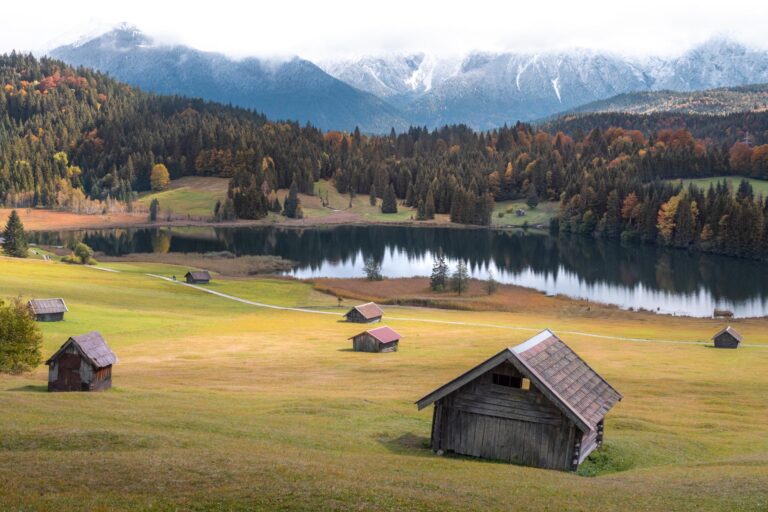
3. Walk across the Titan-RT Suspension Bridge
Travelling around the Harz Mountains, you will quickly realise how big of a role water has played here historically.
To this day, it still does – exemplified by the Rappbode Dam (Rappbode-Talsperre) – the largest dam in the Harz region and the highest dam in Germany.
The 458-metre long suspension bridge Titan RT runs parallel to the dam – and it’s open for pedestrians.
Walking 100 metres above the water below, you don’t want to walk here if you suffer from serious vertigo… The views are great, though!
If you feel extra brave, check out the GigaSwing – dubbed the most spectacular pendulum jump in Europe.
The bridge is open every day from 09:00 to 18:00 and the price to cross it is 6 euro for adults (~ 6.8 USD) and 4 euro for children aged 4-14 (~ 4.5 USD).



4. Walk the cobblestoned streets of Wernigerode
Walking the old streets of Wernigerode is like stepping back in time, immersing yourself in the charming ambience of a medieval town.
Wernigerode may be slightly less renowned than Goslar and Quedlinburg, but it offers an equally captivating experience.
Only a short walk away from the main thoroughfare will take you to hidden cobblestone paths adorned with beautiful half-timbered houses.
Don’t miss the Marktplatz (marketplace) in the centre of town as well as the views up towards Schloss Wernigerode (Wernigerode Castle). We also enjoyed strolling around the Lustgarten (pleasure garden).




Advertisement
5. Catch the unique view towards Wernigerode Castle at Agnesberg
You’ve seen the Wernigerode Castle from Wernigerode’s old town and perhaps you’ve even been inside its medieval walls.
But have you seen the unique view from behind the popular castle at Agnesberg?
The hike up from town is relatively steep, but at only about 1.5 kilometres each way with an incline of 100 metres, it’s doable for most people. And the viewpoint is truly stunning.
We parked (for free) at the parking lot called “Parkplatz Am Lustgarten“. The Agnesberg viewpoint is right by “Stempelstelle HWN 31“.



6. Visit Brocken, Northern Germany’s highest mountain
Apart from its fairytale-like towns, the Harz Mountains are probably most known for being home to Brocken – Northern Germany’s highest mountain.
Standing at 1.142 metres above sea level, it’s not a truly tall mountain. But with no nearby competitors, it certainly feels tall enough!
The views from up here are naturally amazing as you can see as far as the visibility of the day will allow you to in all directions.
There’s a circular path that goes around the summit which is very family-friendly.
The climate at the summit is almost alpine and often quite cold and surrounded by clouds, so remember to bring appropriate clothing.
Fun fact: If you go in a straight line east from Brocken, the next prominent elevation would be in the Ural Mountains in Russia.



How to get to Brocken?
The most popular way to get to the top of Brocken is with the steam train (Brockenbahn).
Leaving from Wernigerode, the trip to the summit takes more than 1.5 hours – so this is certainly not for people in a rush…
It is however a pretty cool experience to travel with one of Germany’s last remaining steam trains and take in the landscapes in a slow, leisurely way.
For active people, it’s possible to both hike and bicycle to the top. As it’s located in the Harz National Park, no cars are allowed at the summit of Brocken.

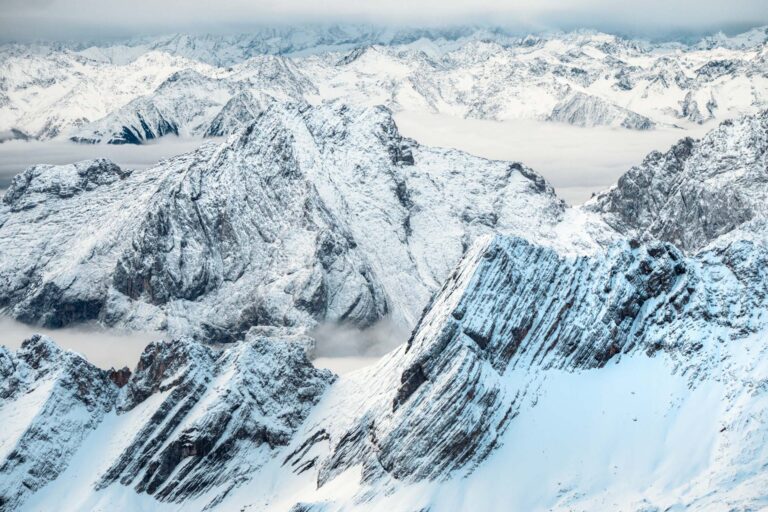
Advertisement
7. Stand in awe under the old linden tree at the Burg Lauenburg ruins
We’ll say it right away: This place is severely underrated.
A beautiful, old linden tree seems to be growing right out of the ruins at Große Lauenburg (Big Lauenburg) – and with a good chance, you’ll have the magical place all to yourself.
While the tree certainly steals the show, don’t miss the tower at Kleine Lauenburg (Small Lauenburg) where you’ll get vistas of the landscapes below.
We parked by the “Naturfreundehaus Schullandheim Stecklenberg” and hiked the ~1.6-kilometre forest path to Große Lauenburg with a height difference of about 160 metres.


8. Learn about the Upper Harz Water Management System
To run a mine, you need energy. A lot of energy.
If you’re from a century without electrical switches and gas stations, using running water as your source of energy is almost just as good as the modern alternatives. That’s what the Upper Harz Water Management System is all about.
The people of the Harz Mountains were ingenious in their ways of using water to drive the water wheels of the mines, and the systems are still clearly on display today.
We walked along a few of the hundreds of kilometres of ditches that were dug to divert water. As the dirt had to be put somewhere, there are walking trails along most – if not all – of them.
It’s also impossible to miss the 100+ water reservoirs (although many of them actually are hidden a bit off the beaten track). They were historically used as “batteries” and are now mostly used for swimming in summer.
To learn more about the water management of the Harz Mountains and go on a guided tour in the surrounding landscape, pay a visit to the Upper Harz Mining Museum (Oberharzer Bergwerksmuseum) – one of the oldest technological museums in Germany.






9. Experience Quedlinburg’s medieval charm
Could a town be much more romantic than the UNESCO-listed city of Quedlinburg?
Often heralded as one of Germany’s prettiest towns, Quedlinburg is the epitome of a fairytale countryside town.
With more than 2,000 timber-framed houses, some dating back hundreds and hundreds of years, there’s an almost endless array of cute atmospheric cobblestone streets, perfect for slow strolls (and a soon-to-be-filled photo library).
History has been kind to Quedlinburg in that wars have been fought elsewhere and almost no houses have burned, making for a very authentic experience.
Schlossberg
A must-do in Quedlinburg is visiting the Schlossberg (Castle Mountain).
Unfortunately, it has been in the middle of some renovations while we’ve stayed in town (should be all done at the end of 2024), but walking up the hill and catching the magnificent views of the city and surrounding landscapes is nevertheless totally worth it.
Münzenberg
We can also recommend catching the views of the Schlossberg from nearby Münzenberg.
Don’t miss the cute backstreets of Münzenberg as well as discovering the small but pretty Münzenbergmuseum.













Advertisement
Where to stay in Quedlinburg?
We stayed at the lovely Romantik Hotel am Brühl during our first time in Quedlinburg, perfectly located super close to the old town.
The hotel is designed in a charming style and we loved our stay. This is surely one of (if not the) best hotels in Quedlinburg.
Check prices and availability at Romantik Hotel am Brühl (adlink).

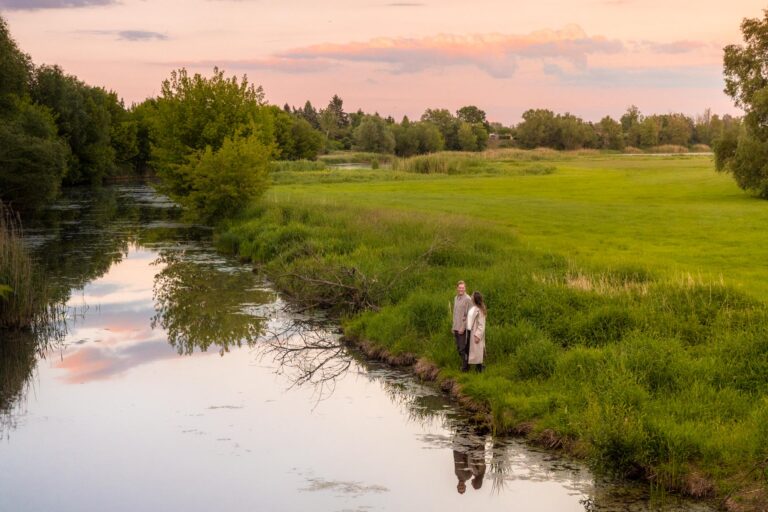
10. Go on short and long hikes in the Harz Mountains
The Harz Mountains are a prime hiking spot with more than 9,000 kilometres of marked trails crisscrossing hills, towns, rivers, forests, valleys and meadows.
Many hikes are dog-friendly (and some are even stroller-friendly!), but you’ll also easily find hikes in the Harz with more demanding terrain and elevation gains.
If you’re looking for longer trails, you’re equally spoilt for choice.
Choose between the Harzer Hexenstieg (100 km), the Harzer Baudensteig (100 km), the Harzer Grenzweg (100 km), the Karstwanderweg Suedharz (200 km), the Selketal-Stieg (72 km), the Harz Monastery Trail (64 km), the Harzer Foersterstieg (60 km) and the Teufelsmauer Stieg (35 km)… To name just a few.
The Harzer Hexenstieg is a popular trail running all the way through the Harz Mountains from Osterode in the west to Thale in the east for about 100 kilometres – notably taking you over Brocken, the highest peak of the Harz.
You can also collect stamps at the 222 checkpoints of the Harzer Wandernadel, located all over the Harz Mountains, to record your visit. Collect all 222 and get the badge of Harz Hiking Emperor or Empress.





11. Hike the Liebesbankweg (love bench trail)
The Liebesbankweg hike in Hahnenklee is a real crowd favourite in the Harz Mountains and one of the best things to do whether or not it’s a sunny day or one of the more overcast ones.
At about 7 kilometres in total length, the circular hike will take you along forest trails past vistas (and many benches!) as well as a couple of scenic ponds (teich) – a few of which you can swim in.






12. Hike the circular Torfhausmoor trail in the national park
If you’re into nature, you’ll be delighted to explore the stunning trails in Harz National Park. Here the environment is mostly left to itself so biodiversity can flourish.
One of the best hikes in the Harz National Park is the hike around Torfhausmoor, offering picturesque landscapes and a charming boardwalk.
This circular hike is approximately 4.5 kilometres long and can be completed in about 1.5 hours.


13. Hike around the Oderteich Lake in the national park
Once, the Oderteich was the largest dam in Germany. Now it’s a listed UNESCO-World Heritage site in the Harz National Park where the previously planted spruce forest is turning into wild nature complete with dead wood and lots of biodiversity.
The Oderteich is perfect if you’re in search of a non-strenuous circular hike with great photo opportunities on the way.
The route around the lake is approximately 4.5 kilometres long and takes about an hour to walk.
Located inside the Harz National Park, nature here is protected and wild.






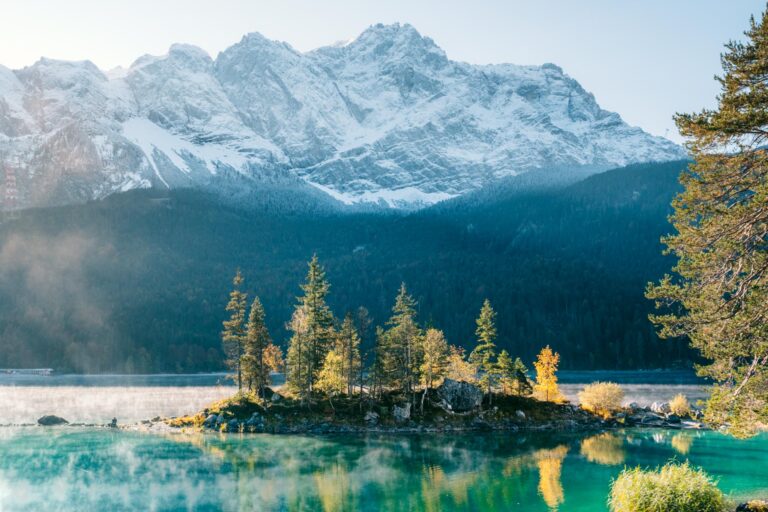
14. Visit the rock formations of the Teufelsmauer (Devil’s Wall)
The Teufelsmauer – the Devil’s Wall – is the name of the rock formations (and the trail connecting them) laid out over about 35 kilometres between Blankenburg and Ballenstedt in the eastern part of the Harz.
The most interesting stone formations are the “Großvater”, “Hamburger Wappen”, “Papenstein”, “Königsstein”, “Mittelstein”, “Dicker Stein” and “Gegensteine”.
On our first time in the Harz, we visited the Königsstein and Mittelstein. Second time around, we got to see Hamburger Wappen.
Königsstein and Mittelstein
We parked our car near Thale and walked to the Mittelstein and Königsstein using the parking called “Parkplatz Teufelsmauer” on Google Maps located on Quedlinburger Str. 13 in Thale.
The hike was easy and provided great views of the rocks as well as the surrounding landscape.



Hamburger Wappen
On our second visit, we visited Hamburger Wappen from Timmenrode. We parked here.
Hamburger Wappen is a pretty big area with lots of opportunities for exploration and photo spots. An easy recommendation if you like big rocks and nice views!





15. Go back in time at the Walkenried Monastery
Visiting the Walkenried Monastery (Kloster Walkenried) is a captivating experience in the Harz that offers a glimpse into the rich history and architectural grandeur of the past.
Stepping foot into the church ruins allows you to immerse yourself in a bygone era, where you can explore the remnants of this medieval monastic complex (from the 12th century!).
We really liked the ruins’ mysterious charm, with weathered stone walls, towering arches, and crumbling corridors that evoke a sense of awe and intrigue – all mixed with the light from the huge windows.
Don’t miss the UNESCO World Heritage Information Centre Walkenried right next door where you can learn all about UNESCO and the World Heritage Site (“Mines of Rammelsberg, Historic Town of Goslar and Upper Harz Water Management System”) in interactive installations.
Also: We can recommend taking a walk around the cute town of Walkenried.



16. Follow in Luther’s footsteps in Lutherstadt Eisleben
If you’re a history buff, don’t miss Lutherstadt Eisleben – the home of Martin Luther.
Martin Luther was the seminal figure of the Protestant Reformation in the 16th century, and in Lutherstadt Eisleben you can visit his birthplace as well as his death place.
Three churches you can’t miss on your visit:
- St. Andreaskirche: The largest church in the city. St. Andreas played an important role in the Reformation and Luther delivered his last sermons here.
- St.-Petri-Pauli-Kirche: This is where Martin Luther was baptized. Contact the church in advance if you want to get baptized here yourself in the new circular pool.
- St. Annen: Visit the Augustinian Hermits Monastery and check out the incredible coffered ceiling from 1608 inside the church. Also, the views from up here across the Lutherstadt Eisleben are beautiful.
Parking tip: Parkplatz Siebenhitze is free all day long and very close to the city centre.






Advertisement
Bonus: Check out all of the most photogenic viewpoints of the Harz Mountains
If you haven’t noticed already, the Harz Mountains are full of photographic opportunities.
So many, in fact, that we can’t include them all here.
If you’re interested in adding beautiful photos to your portfolio and/or Instagram feed, make sure to check out our guide on where to find the best photo spots & most beautiful viewpoints (with 21 ideas).



Advertisement
Where to eat in the Harz Mountains
While Germany (apart from its bigger cities) might not be famous for putting plants at the centre of the plate, we’ve actually been able to eat lots of diverse, delicious plant-based foods in the Harz Mountains.
Goslar has the most dining options, including two fully vegetarian places (Schneeweiss + Rosenrot as well as Soup & Soul Kitchen). We also liked Brumbys Restaurant.
We haven’t spent much time in Wernigerode, but here you’ll also have quite a few options. We dined in the cosy courtyard at Garden of India.
For lunch in Quedlinburg, Samocca is a really solid choice.
Using HappyCow, we’ve had luck finding tasty vegan meals all over the Harz Mountains.
Arabic, Vietnamese and Indian cuisine are often good bets for veganising common dishes in Germany.
We didn’t visit it ourselves, but Naturkost-Hotel Harz (adlink) is an all-vegan bed and breakfast located in the mountains near Bad Grund southwest of Goslar that also serves food for non-guests.






How to get around the Harz Mountains
By car
The road network in the Harz is well-developed and it’s fast to go pretty much anywhere in the region. You’d be hard-pressed to find trips inside the Harz Mountains that take more than an hour of driving.
Parking is generally free in many places. In the towns and near attractions, you may have to pay a small fee if you park centrally. It’s a good idea to bring cash (euro coins) in those cases.
By public transport
We didn’t use any public transport ourselves in the Harz Mountains, but it should definitely be possible to go almost wherever you like with a combination of local trains and buses.
Many trains and buses have timetables and routes that are specifically designed for hikers.
Don’t miss the steam trains that are still very much in use!
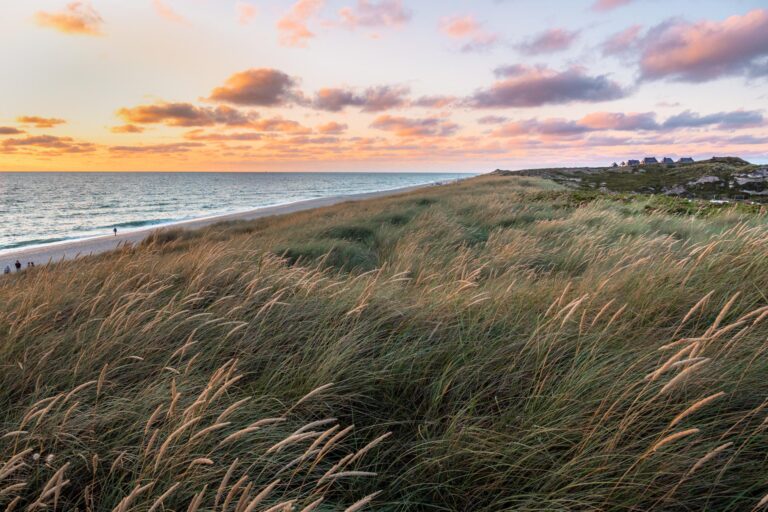
How to get to the Harz Mountains
By land
The Harz Mountains are connected to the German autobahn meaning you can go here by car from all of Europe in a whizz.
Be aware that people drive very fast on the sections of the autobahn that don’t have speed limits. Overtake with caution.
By air
Fly into either Berlin, Hamburg, Hannover, Leipzig or Frankfurt and catch a local train or hire a car to get to the Harz Mountains.
Use our adlink below to find the cheapest tickets:
Search for the cheapest flight tickets on Momondo.
By train
It’s possible to travel by train from all over Europe to the Harz Mountains.
Goslar is the main hub, but it’s also possible to for example go to Wernigerode and Quedlinburg.
On our first visit, we took the train from Copenhagen, Denmark to Goslar which took about 7-8 hours total each way with transfers in Hamburg and Hannover.

When to visit the Harz Mountains
There’s no bad time to visit the Harz Mountains, but as with most other holiday destinations, avoiding the main holiday seasons is a good idea if you want to avoid crowds and enjoy cheaper accommodation.
Spring is a beautiful time to visit with warming weather, rushing water and blooming flowers.
Summer is naturally the warmest season. The summer holidays in Germany are spread out between the middle of June and the middle of September. When we visited in June we had incredible, warm and sunny days.
Autumn is a wonderful time to visit. We visited the Harz Mountains in the middle of November where we were lucky to still see some colourful leaves on the trees. For the best autumn foliage, it might make sense to visit a little bit earlier.
Winter is a popular time to visit for winter sports. Especially so during Christmas and New Year’s. During heavy snowfall, the Harz Mountains turn into the most perfect fairytale winter landscape.



What to bring to the Harz Mountains
- Travel insurance (adlink). Never travel without it!
- A good camera – here’s a guide to the gear we use.
- Sunscreen (adlink). The sun can be strong even in winter.
- Hiking shoes, sneakers or other comfortable shoes you can walk in.
- Swimwear and a towel if you plan to swim or stay at a hotel with a spa.
- Water and snacks.
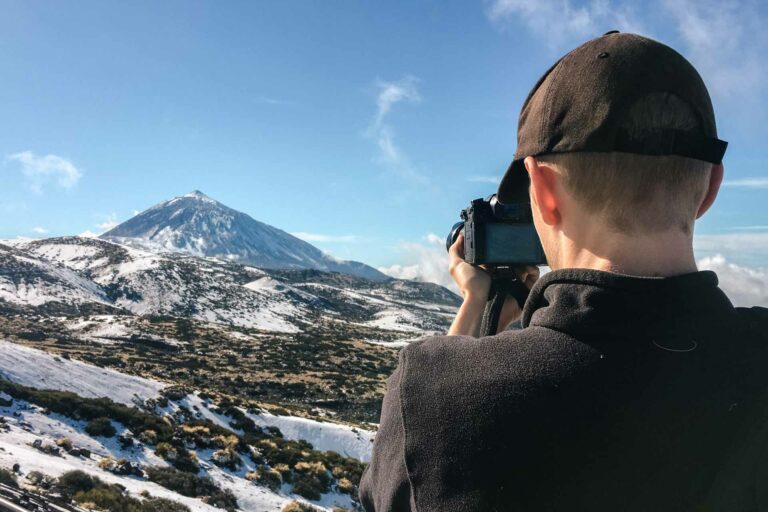
Minimise your impact
To minimise your impact during your visit in the Harz Mountains, follow these guidelines:
- Bring your own drinking water in a refillable bottle.
- Avoid single-use plastics, including straws.
- Dispose of waste properly.
- Check your sunscreen if you intend to swim. Many brands contain oxybenzone and other chemicals that are harmful to the environment.
- Take only photos, leave only footprints. Let everything stay in its natural place.
- Be considerate of other visitors.
- Respect wildlife.
Thanks for reading
Thanks for getting all the way to the end! We hope this travel guide to the Harz Mountains has been useful.
What do you think about the northernmost mountains in Germany and all of the lovely historic towns?
If you’ve been to the Harz, it would be awesome to hear what you think we missed. Please share your best tips and tricks in the comments – thank you!
If you haven’t been yet, please don’t hesitate to ask us anything. We’re only happy to help.



Our favourite travel resources:
- Booking.com for cheap hotels.
- Momondo for the best flight deals.
- SafetyWing for travel insurance. We also like World Nomads and True Traveller. All three compared here.
Our camera gear:
- Panasonic GH5. Used for all of our photos and videos.
- DJI Mavic 2 Pro. Best drone out there!
- Sirui Tripod. Lightweight and strong.
- See all of our camera gear here.
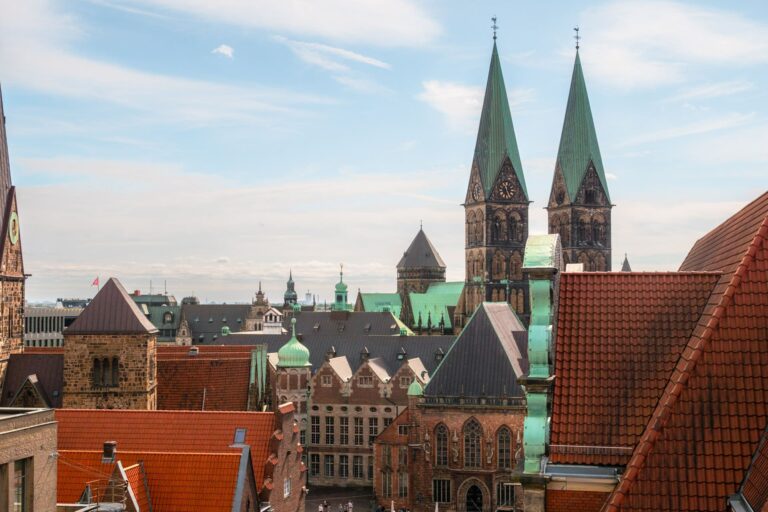
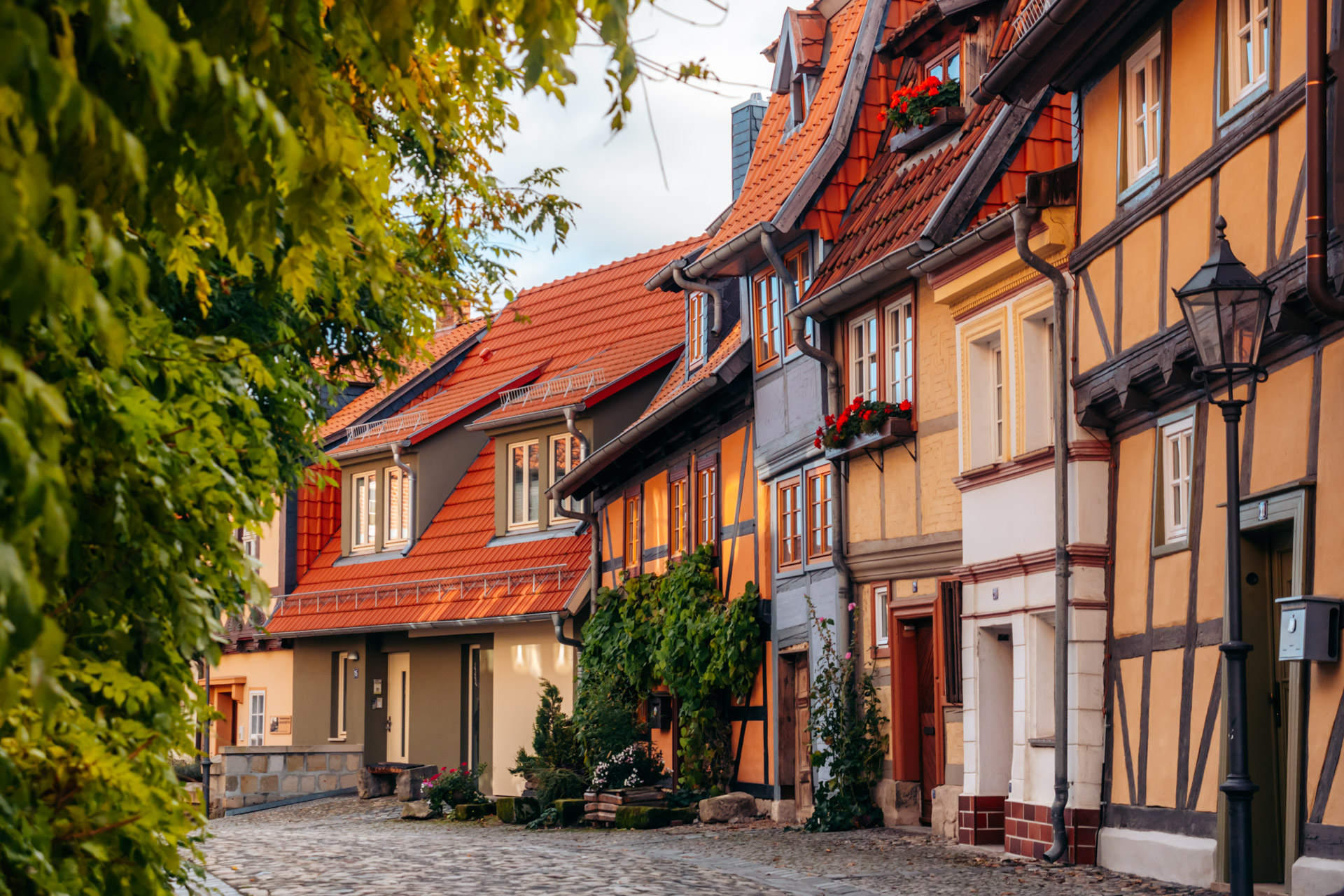

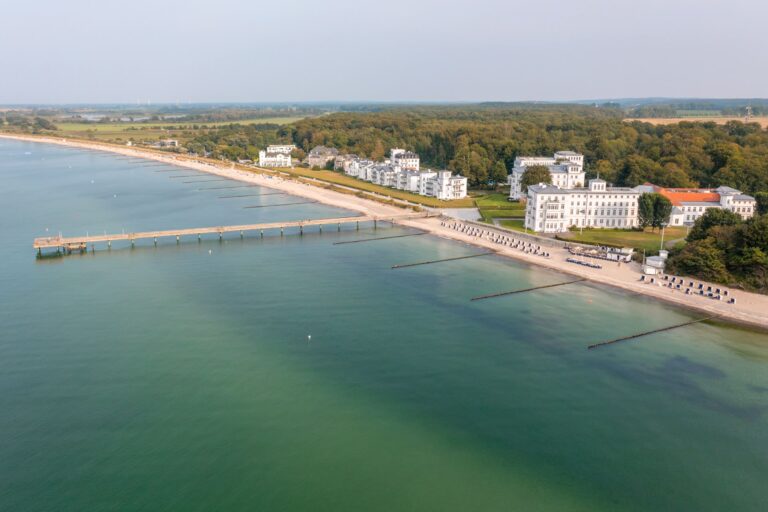
 Book cheap hotels
Book cheap hotels  Find the best flight deals
Find the best flight deals  Nomad insurance
Nomad insurance  Our Camera Gear
Our Camera Gear Our Packing List
Our Packing List
Hi Alex and Victoria, I am touring Europe this May for 2 months and having read your guide to the Harz Mountains have decided to go there. I’m visiting Düsseldorf and Leipzig so it will be a great adventure to get out into the wild area of northern Germany.
Thanks so much for your very detailed guide, great that you share the free parking points too.
Decided to visit Kassel, Goslar, Gustav Adolf Stave Curvh, then do the summit walk. Then on to Wernigerode to get that picture of the castle 🙂
Will then venture on towards Leipzig calling in at the beautifully described Quedlinberg.
Hi Ian, thanks so much for your kind words and for sharing your itinerary! We’re sure you’ll love venturing out into the wild – the Harz Mountains truly is a beautiful area of Germany. Enjoy! 🙂